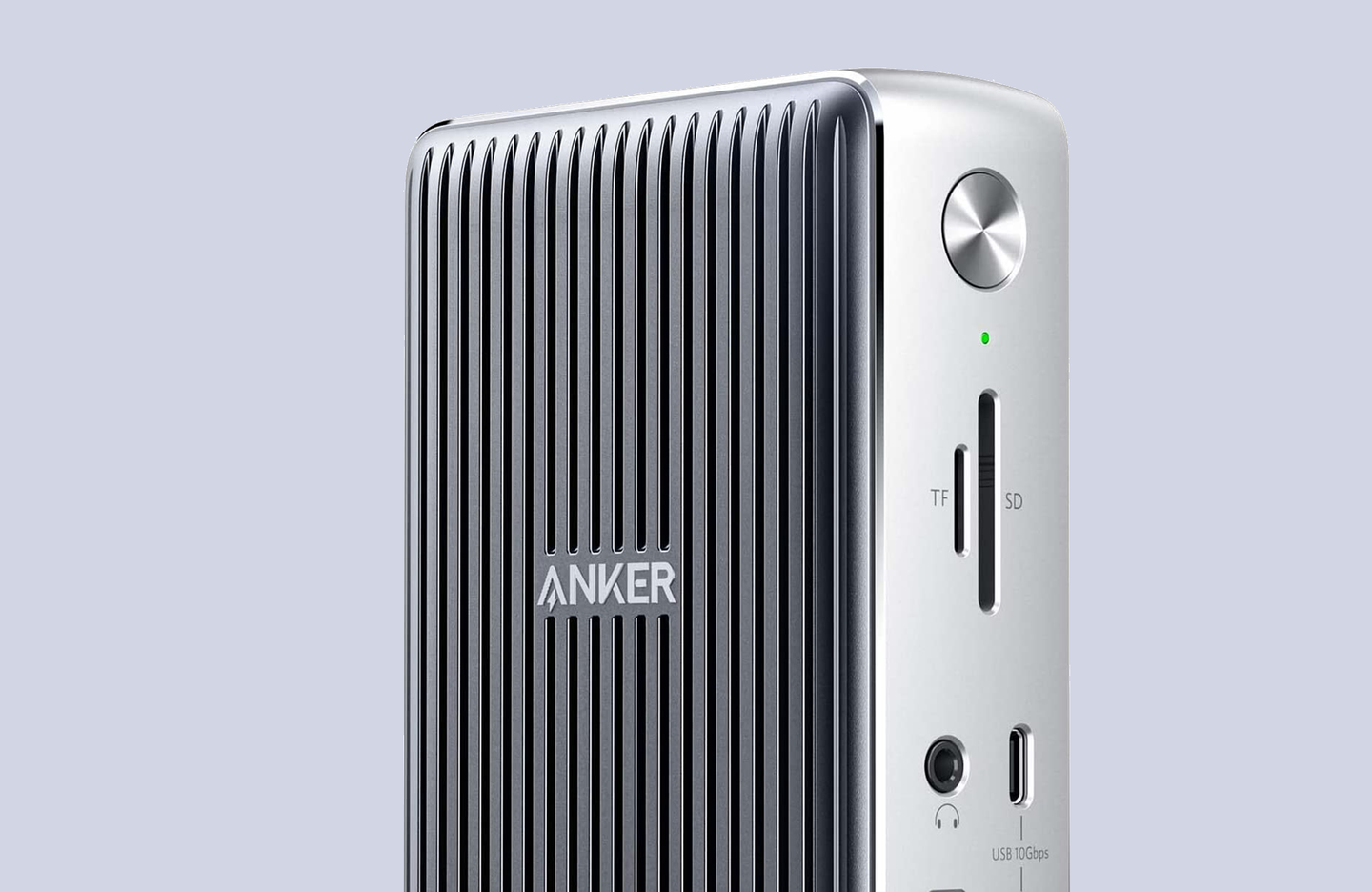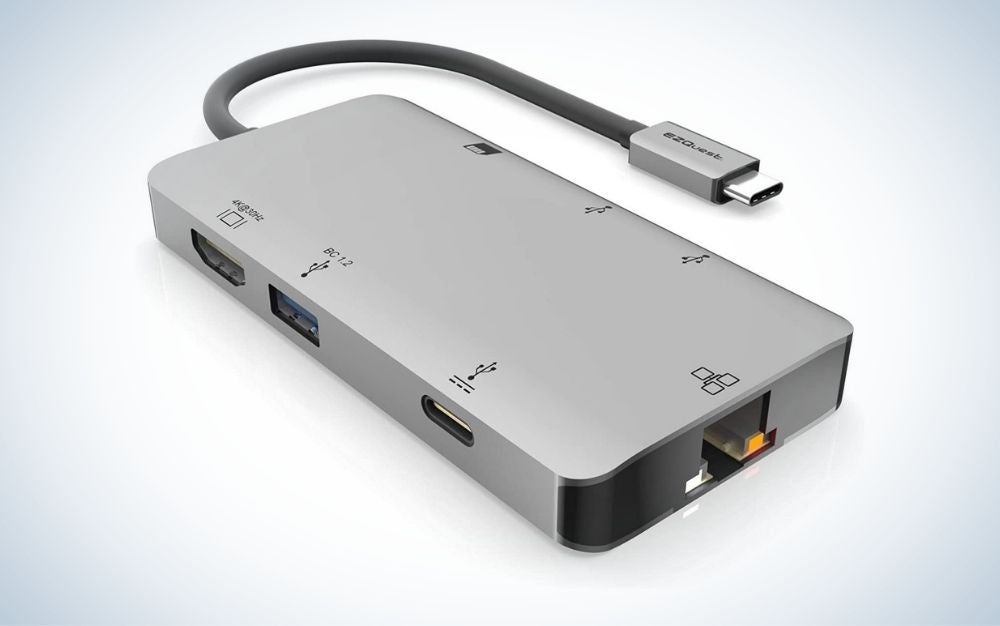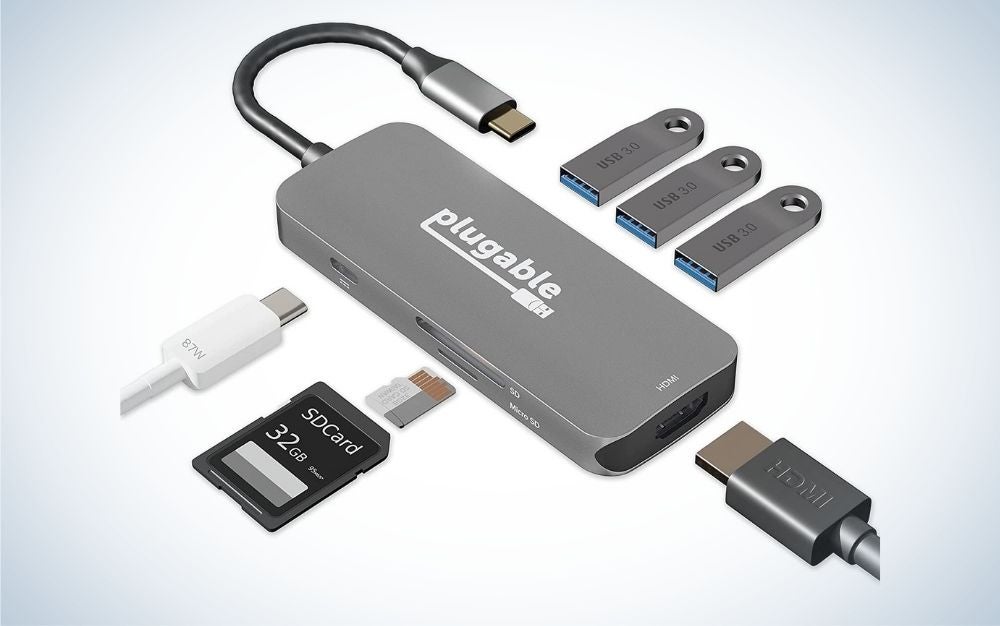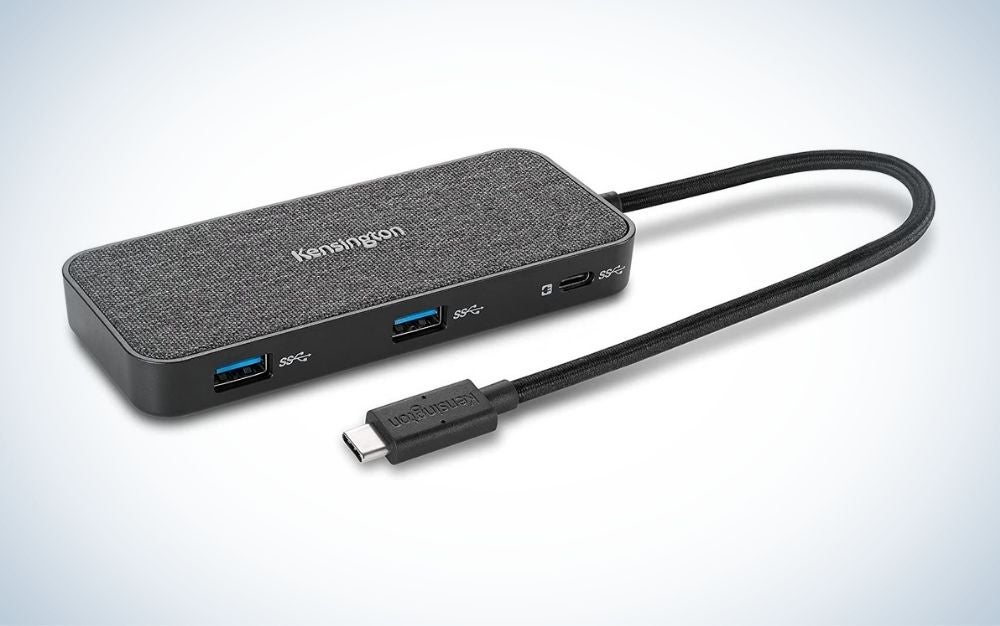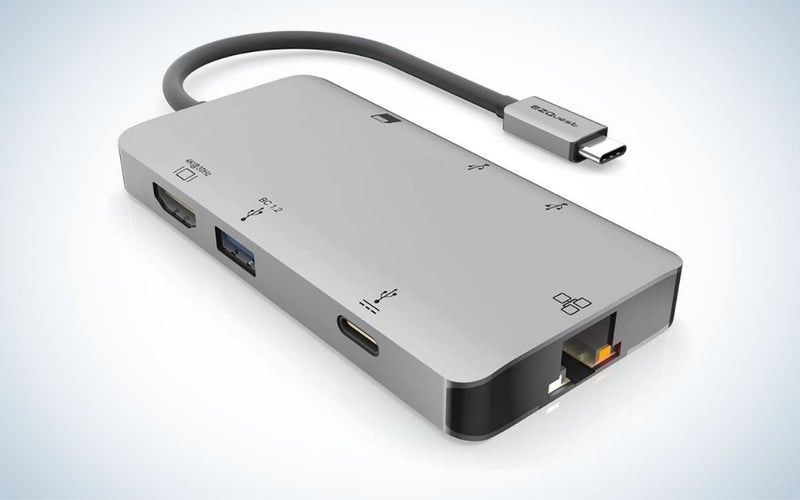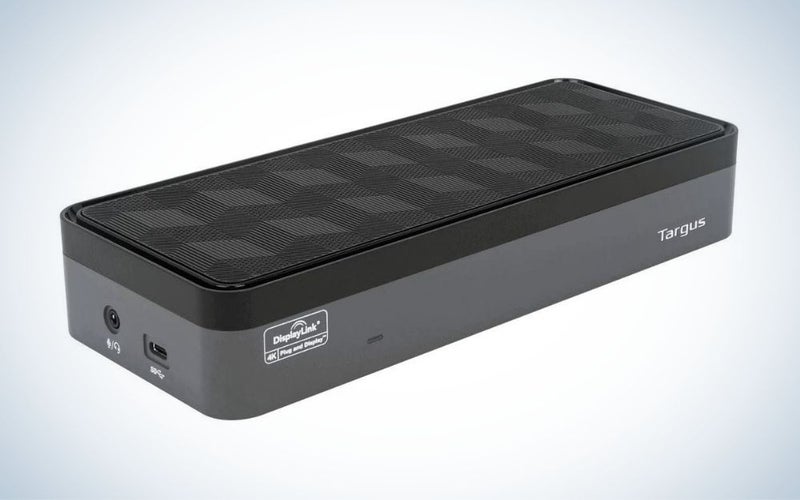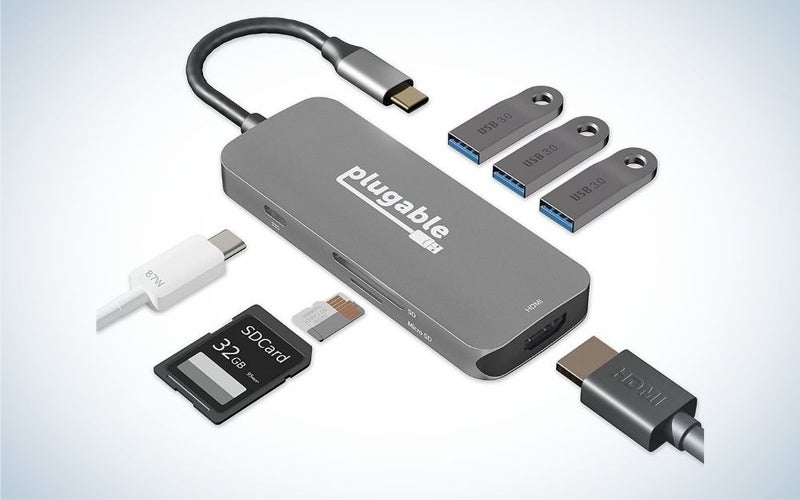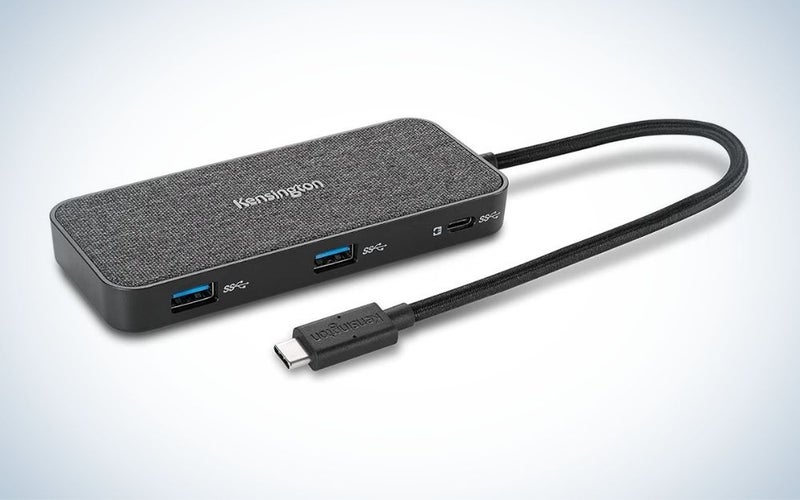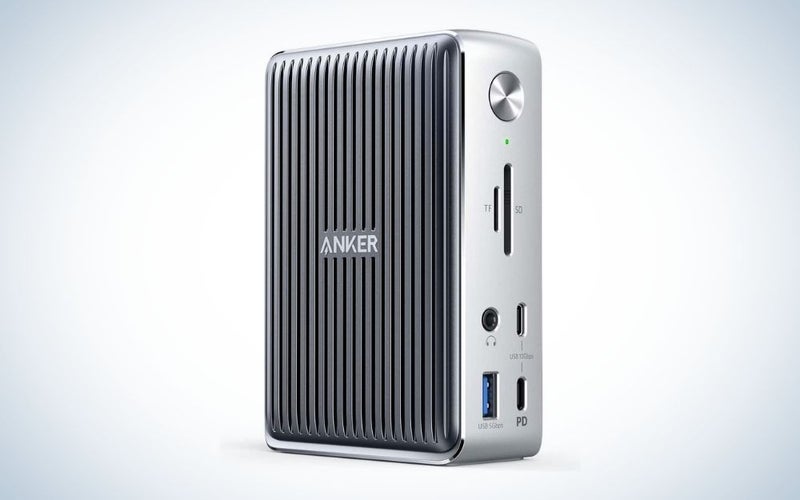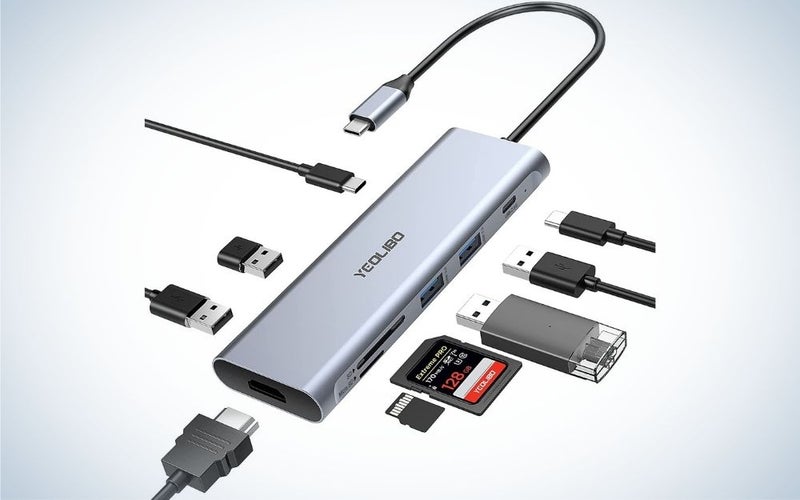We may earn revenue from the products available on this page and participate in affiliate programs. Learn more ›
USB-C hubs are more or less a necessary evil these days. Many popular laptops have cut back the number of ports they offer, yet we still need to plug in a growing army of accessories. Between dongles for mice and keyboards, hard drives, monitors, and the need to charge headphones and phones, most of us need more–and lots of different types of–ports. These best USB-C hubs will help you stay connected without slowing you down.
- Best usb-c hub: EZQuest USB-C Multimedia Hub
- Best for multiple monitor setup: Targus USB-C Universal Quad 4K (QV4K) Docking Station
- Best for USB-A ports: Plugable USB-C 7-in-1 Hub
- Best for traveling: Kensington SD1650P USB-C 4K Portable Docking Station
- Best USB-C docking station: Anker PowerExpand Elite Docking Station
- Best budget: Yeolibo 9-in-1 USB C Hub Multiport Adapter
Things to consider before buying a USB-C hub
Docking station versus hub
If you start looking around for USB-C ports, you may quickly find the term docking station mixed in with hub products. While both devices extend the number–and type–of ports that you have access to, there are some differences to pay attention to.
A USB-C hub’s primary purpose is to expand the number of ports you have access to. They typically offer USB-A ports (frequently multiple) and often offer SD or microSD card slots. USB-C hubs also can have various display ports and even ethernet compatibility. They run off of a laptop’s power and are generally very small and lightweight. The small size makes them easy to throw in your laptop bag if you travel for work, even if that means heading to your local coffee shop for a change of scenery. A hub is likely the best option if you are frequently on the go, have a small workspace, or just don’t need an excessive number of ports.
On the other hand, Docking stations are designed to give desktop functionality to a laptop. They frequently have even more ports than USB-C hubs and offer better connectivity for high-resolution monitors. They are larger than hubs and require a power source beyond the laptop itself, allowing them to power your devices. All of this means that they are also more expensive and larger than hubs. If you only need extra ports when at your desk and want the option of running multiple high-end monitors, a docking station should be your pick.
Ports
One of the main differences between hubs is the number and types of ports. Some offer only multiple USB-A ports, which might be fine if you only plugin things like hard drives or wired keyboards. You can also find HDMI, Ethernet, additional USB-C, and SD card or micro SD card slots on some.
Figuring out what type of connectivity you need and how many ports you may need to plug into at once will give you a better idea of which hub is best for you. You don’t want to buy a hub with two USB-A slots only to realize that you have three devices with that and have to be switching them out constantly.
If a hub has USB-A ports, you will also want to check which generation they are, as older generation USB-A ports may be too slow for things like transferring files. If it has additional USB-C, you will also want to check if it has Thunderbolt compatibility, as that will give you even faster speeds.
Display connectivity
If you are using a hub to connect to a monitor or two, be sure to check not just the type of display port, but also the resolution compatibility and refresh rate. There’s nothing worse than plugging in your monitor and having it slow and laggy while trying to work or watch something. Aim for 4K compatibility with at minimum 30Hz, or 60Hz if you really want to avoid lag.
The best USB-C hubs in 2022: Our picks
Best overall: EZQuest USB-C Multimedia Hub
EZQuest
Why it made the cut: With three well-spaced USB-A ports plus HDMI and SD card slots, this hub is a very well-rounded option.
Key features
- Ports: USB-A 3.0 x 3 (one w/ BC1.2), USB-C x 1, HDMI x 1, SDHC card reader, Micro SDHC card reader, Gigabit Ethernet
- HDMI support: 4K 30Hz
- Passthrough power: Up to 100 watts
Pros
- Thunderbolt 3 compatible
- 4K compatible
- Slim, lightweight design
- Plenty of ports for most
Cons
- Gets hot when in use
The EZQuest USB-C Multimedia Hub checks all the boxes for most situations. It features three USB-A 3.0 ports for quick data transfer. One of those ports is also BC1.2, which means you can charge your phone or headphones faster. There is also one USB-C port on the hub, which offers 100-watt power delivery, though 15-watts go to power the hub itself. It has a 5.9-inch cable, which is long enough to extend from a laptop on a laptop stand, but not so long you have to contend with more cable mess.
There is one HDMI port on the EZQuest hub, which is compatible with 4K video at a 30Hz refresh rate. That may result in some lag for serious video work or gaming, but it should be fine for most. The SDHC and micro SDHC card slots are a nice touch, especially for us photographers on older Macbook Pro versions that did away with that. You’ll no longer need to carry a bunch of different dongles with this hub around.
Best for multiple monitor setup: Targus USB-C Universal Quad 4K (QV4K) Docking Station
Targus
Why it made the cut: The Targus Quad 4K Docking Station is top-notch for those wanting to connect to multiple monitors. It supports up to four monitors via either HDMI or DisplayPort with 4K at 60 Hz.
Key features
- Ports: 4 DisplayPorts, 4 HDMI, 1 USB-C 3.0 with power, 4 USB 3.0, 1 Gigabit Ethernet, 3.5mm combo Audio In/Out
- HDMI support: Dual 4K 60Hz
- Passthrough power: 100 watt
Pros
- Supports up to four monitors
- Tons of ports
- Audio jack
Cons
- Very pricey
If you are serious about your monitor setup and want the option of running many at once, this docking station is an excellent choice. It has four HDMI 2.0 and four DisplayPort 1.2, both of which support 4K at 60 Hz. That means you can get the most out of your quality monitors while getting tons of screen real estate.
Beyond the display possibilities, you also get four USB-A options and one USB-C, plus Ethernet. The 3.5mm audio is also nice if you are streaming and want the ability to use a microphone.
The downside to all this is that it is very pricey and isn’t travel-friendly. If you want to save some money and only use two displays, there is also a dual-display version for a bit cheaper. Or, if you travel a lot but still have access to multiple monitors, the Belkin Thunderbolt 3 Dock Mini is a good substitute.
Best for USB-A ports: Plugable USB-C 7-in-1 Hub
Plugable
Why it made the cut: The Plugable USB-C 7-in-1 Hub provides three fast USB-A 3.0 ports, perfect for plugging in multiple hard drives.
Key features
- Ports: 3 USB 3.0 ports, 1 4K HDMI, 1 SD card reader, 1 microSD card slot, and 1 USB-C Power Delivery charging port
- HDMI support: 4K 30Hz
- Passthrough power: 87 watts
Pros
- Small and lightweight
- Very affordable
- Plenty of variety in ports
- 4K compatibility
Cons
- Cable is a little short
The Plugable USB-C 7-in-1 Hub is an excellent choice for most people, especially those with multiple USB-A devices that need to be plugged in at once. With the exception of larger, more expensive USB-C docks, you won’t find a travel-friendly hub with more USB-A ports.
Beyond the USB-A ports, it also has SD and microSD card reader slots and a USB-C port with 87 watts of passthrough charging. There is also a single HDMI port with 4K 30Hz support so that you can stream quality video without issue. It’s a very small device, making it easy to toss in your bag and bring with you on trips or coffee shop outings.
Best for traveling: Kensington SD1650P USB-C 4K Portable Docking Station
Kensington
Why it made the cut: This hub works with pretty much any device, has a lengthy 11-inch cord, and is nicely compact for when you are on the go.
Key features
- Ports: 2 USB-A 3.2 Gen 1, 1 USB-C 3.2 Gen 1, 1 HDMI 2.0, 1 VGA Full HD, 1 RJ45 Ethernet
- HDMI support: 4K 30Hz
- Passthrough power: 100 watts
Pros
- Attractive, compact design
- Comes with cable storage clips
- Plug and play
- 4K support
Cons
- Pricey
- Only single-display compatible
This Kensington Portable Docking Station is more hub than docking station, but it gets the job done when you are on the go. It is just 2.13 x 5 x 0.63 inches, making it plenty small to throw in your bag without taking up much real estate. It has an 11-inch cord, giving it good reach when needed, but it comes with cable storage clips to keep things organized.
There are only 2 USB-A 3.2 ports, but for most travel situations, that should be plenty. You also get one USB-C port with 100 watts of passthrough power. It has HDMI connectivity that supports 4K with a 30 Hz refresh rate and a VGA port for full HD (1080p at 60Hz). You also get an Ethernet port should you need to plugin for internet access.
Best USB-C docking station: Anker PowerExpand Elite Docking Station
Anker
Why it made the cut: If you need lots of ports with lots of power, the Anker PowerExpand Elite is your best bet. It has eight different types of ports and 13 ports total, three of which can supply power.
Key features
- Ports: 2 Thunderbolt 3 ports, 2 USB-C, 4 USB-A, 1 HDMI, Gigabit Ethernet, SD/microSD card slots, 3.5 mm AUX port
- HDMI support: 4K 60 Hz
- Passthrough power: 85W and 15W Thunderbolt 3 ports plus an 18W USB-C
Pros
- Lots of variety of ports
- Dual display compatible
- Can power multiple devices at once
- Headphone jack
Cons
- Not compatible with M1 MacBooks or Linux or Chrome OS laptops
- Requires a large power adapter
The Anker PowerExpand Elite Docking Station is for those who want a serious hub for devices. It has an HDMI port capable of 4K at 60 Hz and a Thunderbolt 3 port that supports 5K 60Hz. You can run those simultaneously for dual monitors or even run a USB-C-to-HDMI dual splitter to add two monitors with 4K at 30 Hz, resulting in three monitors.
You get 2 Thunderbolt 3 ports, one to connect to a laptop and provide 85-watts of power and another that offers 15-watts. There is also a 3.5 mm AUX port, so you can plug in your headphones or a microphone if you need to do some recording. Unfortunately, there isn’t a fan, so it can get pretty hot, though standing it up on its side can help. The 180-watt power adapter is large, but this docking station will likely do everything you may need it to do.
Best budget: Yeolibo 9-in-1 USB C Hub Multiport Adapter
YEOLIBO
Why it made the cut: USB-C hubs can be very expensive, but the Yeolibo 9-in-1 hub comes in at a highly affordable price while still having plenty of port options.
Key features
- Ports: HDMI, 1 USB-C PD charging port , 1 USB-C 3.0 port, 3 USB 3.0 Ports, 1 USB 2.0 Port, 1 SD card slot, 1 microSD card slot
- HDMI support: 4K 30 Hz
- Passthrough power: 87 watts
Pros
- Very affordable
- Small and lightweight
- Plenty of ports
Cons
- No Ethernet
If you aren’t looking for something fancy but still want options for ports, the Yeolibo 9-in-1 hub is a great option. It has an HDMI port with 4K at 30 Hz, so lagging won’t be an issue. You also get microSD and SD card slots, which we photographers can always use. The microSD and SD card slots are plenty fast, capable of up to 2TB and 25MB/s, so you can quickly transfer your photos and move on with your life.
There are four USB-A ports in total on this hub, with one being the slightly older and slower 2.0 version. That means you can plug in lots of hard drives or dongles for things like mice. You also have the option of 85 watts of charging through a USB-C PD charging port. For the price, this hub really can’t be beaten.
FAQs
Q: How much do usb-c hubs cost?
USB-C hubs cost anywhere between $20 and nearly $500. The more expensive options are USB-C docking stations which offer lots of power and more ports. Cheaper options tend to be a bit slower with fewer ports but are more travel friendly.
Q: Is there a hub with multiple USB-C ports?
There are many hub options with multiple USB-C ports. These hubs are helpful if you need to expand the number of ports your laptop offers since many only provide two or three these days (looking at you, Macbooks).
Q: Does a USB-C hub require power?
Most USB-C hubs do not require power beyond what it gets from the computer itself. However, docking stations do require power and have to be plugged into an outlet for you to use them.
Methodology
As a Macbook user, USB-C hubs are simply a fact of life for me. I have used quite a few over the years and have learned what essential features to look for. When making the selections for the best USB-C hubs, I looked at a variety of brands and price points, as some hubs can get prohibitively expensive. In addition, I paid attention to what types of ports were available, focusing on ones that most people would use on a day-to-day basis. Good placement of ports with space between them is also vital, as crowding could prevent them from actually being useful. Speed and the ability to charge devices were also things I factored in, as you don’t want your workflow to slow down because of your hub. Finally, I used a combination of personal experience with various hubs and editorial reviews when making my final selections.
Final Thoughts
The best USB-C hub for you will give you the ports that you need to connect whatever devices you have at once. The EZQuest USB-C Multimedia Hub has a good variety in port type and number of ports, making it the best all-around option.
